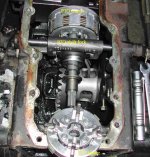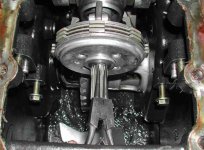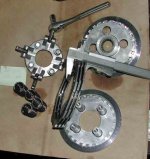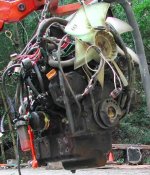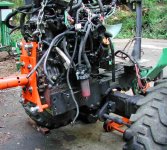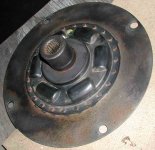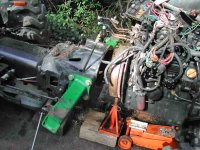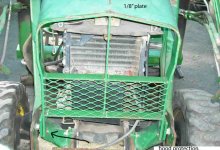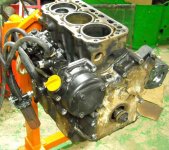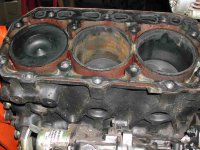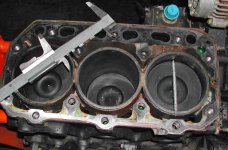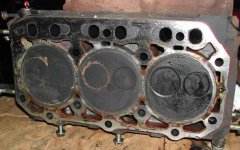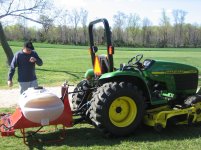dfkrug
Super Member
- Joined
- Feb 3, 2004
- Messages
- 7,174
- Location
- Santa Cruz Mtns, CA
- Tractor
- 05 Kioti CK30HST w/ Prairie Dog backhoe, XN08 mini-X
Here is the PTO clutch, brake, and shift fork. If you look closely at
the first photo, under the letters "TO", you can see that the clutch is
missing one friction disc. How did that happen? If the clutch broke,
it is hard to imagine that only one disc of 9 were affected. I checked the
thickness of the plates for the brake and the clutch and they were both
in spec. I suspect that the last mechanic forgot to put in all the discs.
The 2nd photo shows removal of the brake assembly, after removing the
support bulkhead. The shift fork needs to be removed before the clutch
can be slid out toward the rear.
At $250, the clutch "pack" (9 discs, 8 plates) is one of the most expensive
parts of this rebuild. They are only sold as a pack.
the first photo, under the letters "TO", you can see that the clutch is
missing one friction disc. How did that happen? If the clutch broke,
it is hard to imagine that only one disc of 9 were affected. I checked the
thickness of the plates for the brake and the clutch and they were both
in spec. I suspect that the last mechanic forgot to put in all the discs.
The 2nd photo shows removal of the brake assembly, after removing the
support bulkhead. The shift fork needs to be removed before the clutch
can be slid out toward the rear.
At $250, the clutch "pack" (9 discs, 8 plates) is one of the most expensive
parts of this rebuild. They are only sold as a pack.
